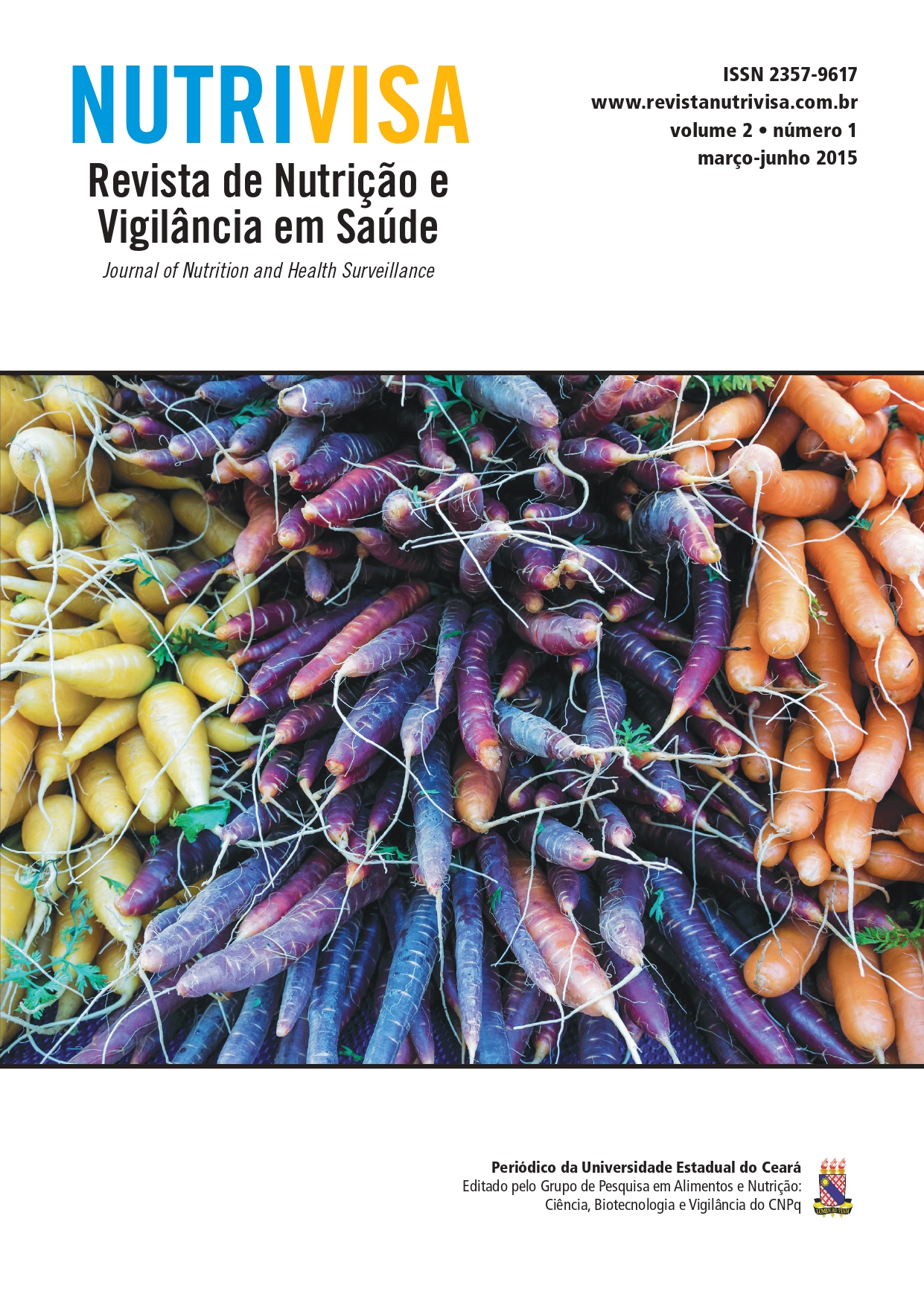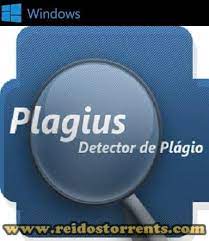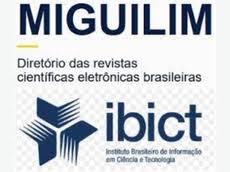Selênio, atividade biológica e sua relação com o câncer: uma revisão de literatura
DOI:
https://doi.org/10.59171/nutrivisa-2015v2e9092Palavras-chave:
câncer, prevenção, selênioResumo
O selênio é um micronutriente considerado essencial para o ser humano, envolvido em várias funções metabólicas e ainda relacionado com a prevenção do câncer. Neste sentido, este trabalho teve como objetivo mostrar a importância do selênio para a atividade biológica e sua relação com o câncer. O estudo se fundamentou numa pesquisa bibliográfica, na qual foram analisados vários trabalhos do período de 1990 a 2014. A pesquisa foi desenvolvida através do levantamento de informações em livros de nutrição e banco de dados eletrônicos, como Scielo, ScienceDirect e bibliotecas digitais de instituições de ensino superior. Os resultados demonstraram que o selênio é um micronutriente essencial para os seres humanos, pois as suas concentrações residuais permitem o crescimento, o desenvolvimento normal e a manutenção das funções homeostáticas do organismo; desempenha função antioxidante neutralizando os radicais livres; regula o sistema imune; além de atuar na prevenção de várias doenças, no câncer de cólon, ovários, bexiga, mama e próstata, permitindo concluir que o selênio é um elemento de fundamental importância para a atividade biológica em seres humanos e ainda funciona como agente antimutagênico na prevenção de transformações malignas de células normais, apontando, também, para ser aplicado na redução da toxicidade de citostáticos.
Referências
ALAEJOS, M. S.; ROMERO, F. J. D.; ROMERO, C. D.. Selenium and cancer: some nutritional aspects. Nutrition, New York, v. 16, n. 5, p. 376-383, may, 2000.
ALLAN, C. B.; LACOURCIERE, G. M.; STADTMAN, T. C. Responsiveness of selenoproteins to dietary selenium. Annual Review of Nutrition, v. 19, p. 1–16, 1999.
ALISSA, E. M.; BAHIJRI, S. M.; FERNS, G. A. The controversy surrounding selenium and cardiovascular disease: a review of the evidence.
Medical Science Monitor, v. 9, n. 1, p. RA9-18, Jan. 2003.
ALMONDES, K. G. S. et al. The role of selenoproteins in câncer. Revista da Associação Médica Brasileira, São Paulo, v. 56, n. 4, p. 484-488, 2010.
AMAYA-FARFAN, J.; DOMENE, S. M. A.; PADOVANI, R. M. DRI: síntese comentada das novas propostas sobre recomendações nutricionais para antioxidantes. Revista de Nutrição, Campinas, v. 14, n. 1, p. 71-78, jan./abr. 2001.
BEHR, C. S. Efeito de uma dieta enriquecida com castanha-do-brasil (Bertholletia excelsa, L.) no estado nutricional relativo ao selênio de idosos não institucionalizados. 2004. 99 p. Dissertação (Mestrado em Ciências dos Alimentos) - Faculdade de Ciências Farmacêuticas, Universidade de São Paulo, São Paulo, 2004.
BRATAKOS, M.S. et al. The nutritional selenium status of healthy greeks. The Science of the Total Environment, Amsterdan, v. 91, p.161-176, feb. 1990.
BRODY, T. Nutritional Biochesmistry. Califórnia: Academic Press, 1994..
BROWN, K. M.; ARTHUR, J. R. Selenium, selenoproteins and human health: a review. Public Health Nutr. v. 4, n. 2B, p. 593- 599, Apr. 2001.
COMINETTI, C. et al. Considerações sobre estresse oxidativo, selênio e nutrigenética. Nutrire: Revista da Sociedade Brasileira de Alimentação e Nutrição,São Paulo, v. 36, n. 3, p. 131-153, dez. 2011.
CUNHA, D. F.; CUNHA, S. F. C.. Microminerais. In: OLIVEIRA, J. E.D.; MARCHINI, J. S. (Org). Ciências Nutricionais. 1ª ed. São Paulo: Sarvier, 1998, p. 150.
DUNTAS, L. H. The Role of Selenium in Thyroid Autoimmunity and Cancer. Thyroid, EUA, v. 16, n. 5, p. 455-460, may. 2006.
HAMILTON, S. J. Review of selenium toxicity in the aquatic food chain. Science of the Total Environment, v. 326, p. 1–31, jan. 2004.
HARVIE, M. Nutritional Supplements and Cancer: Potential Benefits and Proven Harms. Asco Educational Book, Nutritional Supplements and Cancer, Wythenshawe, p. 478-486, 2014.
KECK, A. S.; FINLEY, J. W. Database values do not reflect selenium contents of grain, cereals, and other foods grown or purchased in the upper Midwest of the United States. Nutrition Research. Tarrytown, v. 26, n. 1, p. 17-22, jan. 2006.
LUTY-FRACKIEWICZ, A. The role of selenium in cancer and viral infection prevention. International Journal of Occupational Medicine and Environmental Health, Poland, v. 18, n. 4, p. 305–311, oct. 2005.
MANDAIR, D. et al. Prostate cancer and the influence of dietary factors and supplements: a systematic review. Nutrition & Metabolism, Reino Unido, v. 11, n. 30, p. 1-11, jun. 2014.
MURAWAKI, Y. et al. Aberrant expression of selenoproteins in the progression of colorectal cancer. Cancer Letters, Tottori, v. 259, n. 2, p. 218-230, feb. 2007.
NAVARRO-ALARCÓN, M.; LÓPES-MARTÍNEZ, M. C. Essentiality of selenium in the human body: relationship with different diseases. The Science of the Total Environment, Amsterdan, v. 249, p. 347-371, apr. 2000.
NAVARRO-ALARCON, M.; CABRERA-VIQUE, C. Selenium in food and the human body: A review. Science of the Total Environment, Granada, v. 400, n. 1-3, p. 115-141, aug. 2008.
RAYMAN; M. P. The importance of selenium to human health. The Lancet, London, v. 356, n. 9225, p. 233-241, july. 2000.
RAYMAN; M. P. Selenium in cancer prevention: a review of the evidence and mechanism of action. Proceedings of the Nutrition Society, Ireland, v. 64, n. 4, p. 527-542, nov. 2005.
REILLY, C. Selenium in Food and Health. 2ª ed. Germany: Springer, 2006.
SANTOS, I. G.; STANCARI, P. C. S. Carências Nutricionais. In: SANTOS, I. G. (Org). Nutrição: da assistência à promoção da saúde. 1ª ed. São Paulo: RCN, 2007, p. 131.
SIEJA, K.; TALERCZYK, M. Selenium as an element in the treatment of ovarian cancer in women receiving chemotherapy. Gynecologic Oncology, Szczecin, v. 93, n. 2, p. 320-327, may. 2004.
SILVA, C. R. Avaliação do estado nutricional relativo ao selênio de pré-escolares institucionalizados. 2006. 1-18f. Dissertação (Mestrado) – Programa de Pós-Graduação em Alimentos e Nutrição, Universidade Estadual de Campinas, Faculdade de Engenharia de Alimentos. Biblioteca Digital da UNICAMP, Campinas, 2006. Disponível em: . Acesso em: 7 mai. 2014.
SUZANA, S. et al. Relationship between selenium and breast cancer: a case-control study in the Klang Valley. Singapore Medical Journal, Malaysia, v. 50, n. 3, p. 265-269, 2009.
TABASSUM, A.; BRISTOW, R.G.; VENKATESWARAN, V. Ingestion of selenium and other antioxidants during prostate cancer radiotherapy: A good thing?. Cancer Treatment Reviews, Toronto, v. 36, n. 3, p. 230-234, may. 2010.
TINGGI U.. Essentiality and toxicity of selenium and its status in Australia: a review. Toxicol Lett, Ireland, v. 137, p. 103–110, 2003.
VIARO, R. S.; VIARO, M. S.; FLECK, J. Importância bioquímica do selênio para o organismo humano. Disciplinarum Scientia, Série: Ciências Biológicas e da Saúde, Santa Maria, v. 2, n.1, p. 17-21, 2001. Disponívelem: <http://sites.unifra.br/Portals/36/CSAUDE/2001/a_importancia.pdf>. Acesso em: 2 abr. 2014.
ZENG, H.; COMBS, G. F. Selenium as an anticancer nutrient: roles in cell proliferation and tumor cell invasion. Journal of Nutritional Biochemistry, Grand Forks, v. 19, n. 1, p. 1-7, jan.2008.
Publicado
Como Citar
Edição
Seção
Licença
Copyright (c) 2015 José Freitas da Silva

Este trabalho está licenciado sob uma licença Creative Commons Attribution 4.0 International License.














